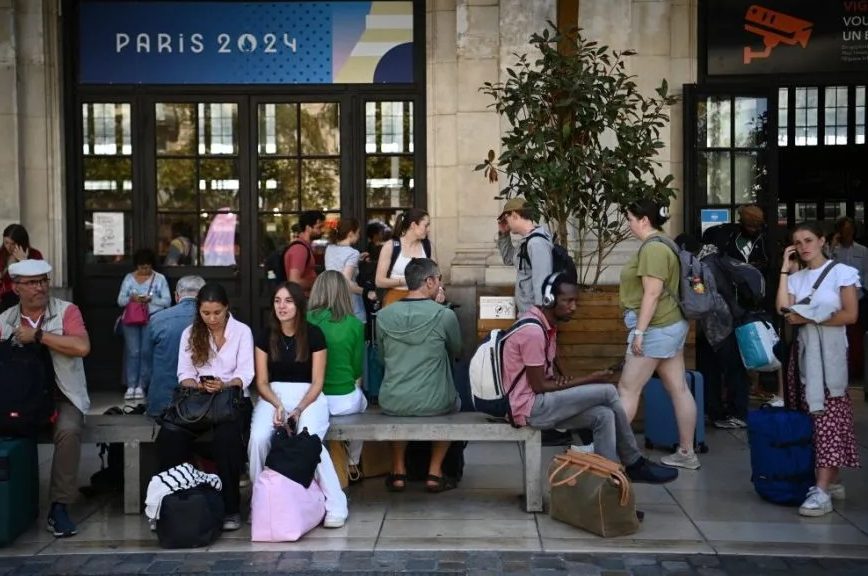Trains are again running normally in France today after engineers worked over the weekend to repair the damage caused by Friday’s coordinated attack on the network. Also working overtime are fifty specialists from the national crime unit, who have pored over the three sites where saboteurs struck.
“Even though the fires melted hundreds of cables, at the risk of destroying precious clues, samples are currently being examined in the Gendarmerie laboratories,” a police source said. A bullish Gérald Darmanin, the minister of the interior, declared over the weekend that the investigation to identify the culprits was progressing well and “we will know fairly quickly who is responsible.”
The French far left has been in thrall to violence for centuries
The British media was quick to point the finger of blame at Russia, but from the outset French police suspected it was more likely to have been homegrown terrorists — probably the far left. According to the French media on Monday morning, police have arrested one man in connection with the attack who is described as a member of the “ultra left.” The French train network has been targeted on several occasions in recent years, most notoriously in 2008 when a far-left cell allegedly sabotaged three high-speed lines in central France.
;768:[300×250,336×280,320×100];0:[300×250,320×100,320×50]”]The threat from the far left has increased in recent years. In January 2021, Laurent Nuñez, France’s national coordinator of intelligence and counter-terrorism said that around ten far-left activists had been fighting in Syrian Kurdistan and had returned battle-hardened. This cell was well-disciplined, well-trained and highly motivated.
“Since March 2020, 170 sabotage actions have been logged,” explained Nuñez. More than half these acts were against against telephone masts, but they also included strikes against utility companies, a sub-prefecture, gendarmeries and police vehicles.
As I wrote last year, the French far left has been in thrall to violence for centuries, ever since the “Terror” of 1793-4, when Robespierre and his revolutionaries murdered tens of thousands. Violence, said the constitutional historian Christophe Boutin in 2023, “is in the DNA of a certain French left.” This he attributed to “the myth of the Revolution… and a Marxist doctrine according to which capitalism can only end in violent revolution.”
This mythologization of Robespierre explains why a group of far-left members of parliament gathered in Arras on Sunday to commemorate his death on July 28, 1794. Two of them, Ugo Bernalicis and Zahia Hamdane, hailed a man “who always defended principles first and foremost.”
Last year, the journalist Anthony Cortes published a book about his experience living under cover among a cell of far-left activists. In The Coming Confrontation: From Eco Resistance to Eco-Terrorism, Cortes described the dedication and discipline of the cell, a conglomeration of anti-fascists, Trotskyists, anti-capitalists, anarchists and eco-warriors.
;768:[300×250,336×280,320×100];0:[300×250,320×100,320×50]”]The chaos caused by the sabotage last week — which disrupted the travel plans of nearly one million passengers and humiliated president Emmanuel Macron on the day of the Olympics opening ceremony — could have been even worse. A fourth attack on the high speed line linking the north of France to the south-east was foiled when railway workers spotted the saboteurs, who fled into the night. This was at Vergigny in the Yonne departement, less than twenty miles from where I live. Vergigny is also close to the small town of Migennes.
Migennes has been railway town since 1880 when the first depot was built followed by a housing estate for workers. It was a fiercely left-wing town throughout the twentieth century, and during the World War One it became a hub for Resistance activity. Combining their expertise with great courage, railway workers — mostly communists — waged an effective guerrilla campaign against the Germans, sabotaging locomotives and lines and blowing up bridges.
There are 17,000 miles of railway lines in France so preventing sabotage is a daunting task for the authorities. If it was the far left who were responsible, it was another reminder that Islamic terrorism is not the only threat to France.
This article was originally published on The Spectator’s UK website.


























Leave a Reply